Tendons play a fundamental role in human mobility, translating muscle action into joint movement. Tendons are an extension of muscles, made up mostly of tough dense collagen fibers, arranged in parallel. Their low vascularity limits the amount of oxygen and nutrients that can be delivered to damaged tendon cells, making them slow to heal.
An important property of tendon fibers is their elasticity. During eccentric muscle contraction, tendon fibers are stretched like a rubber band. As the tendon recoils during the muscle shortening phase, elastic energy is released, contributing to force production.
When left untreated, the mechanical properties of injured tendon fibers, including density and elasticity, become altered, inhibiting their functional capacity. Untreated tendon injuries can degenerate, causing long-term disability.
Using ultrasound imaging, we are able to detect mechanical changes to tendon fibers, and apply regenerative therapies that restore tendon integrity.
or
NYDNRehab clinical director Dr. Lev Kalika has devoted his life’s work to revolutionizing the way physical pain syndromes and motor disorders are diagnosed and treated. Dr. Kalika is a world-renowned expert in diagnostic musculoskeletal ultrasonography, and has contributed multiple research articles to the growing body of scientific literature on its use in rehabilitative medicine.
The clinic at NYDNRehab features the highest resolution ultrasound equipment available for diagnosis and treatment. In addition to imaging large structures like tendons, ligaments, nerves, muscles and bones, our equipment gives us the capability to test tendon density via sonoelastography. It also enables us to detect early signs of tendon fiber healing via superior microvascular imaging.
In addition to ultrasound capabilities, we use the most advanced regenerative technologies available to stimulate and accelerate the healing process.
As an Achilles tendon specialist, Dr. Kalika is sought out by elite athletes, runners and ballet dancers in NYC, and across the USA.
Tendon issues are common among athletes and physically active people, although sedentary and elderly people may also experience tendon injuries.
The most common causes of tendon pain and dysfunction are:
Repetitive overuse from sports and exercise
Repetitive occupational overuse
Trauma from falls or accidents
Excess body weight that overloads tendons
Being out of shape
Seeking early treatment is essential for avoiding mechanical changes to tendon fibers. However, even old tendon injuries can benefit from physical therapy and regenerative technologies that repair fibers and restore tendon architecture.
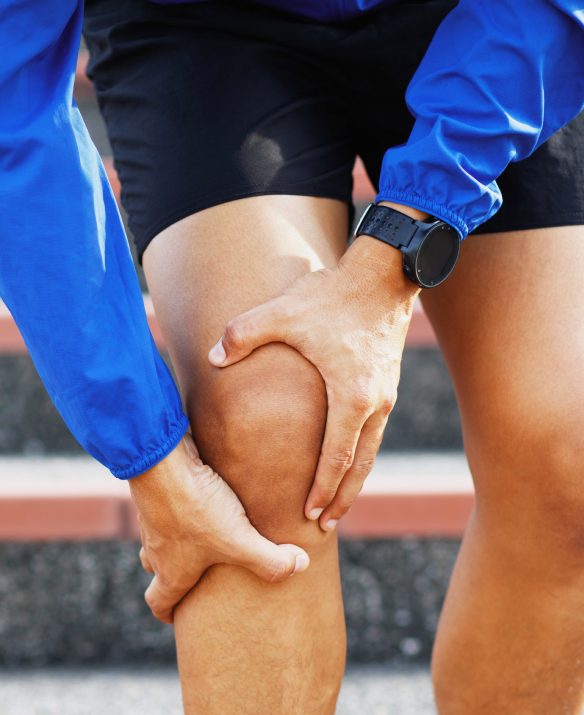
Tendons form the junction between muscle and bone at every joint. They translate mechanical torque generated from muscle contraction to the bones where they attach, causing joint movement. During high-intensity physical activity, tendons are subjected to massive force loads that can put them at risk for injuries.

Rotator cuff

Forearm extensors
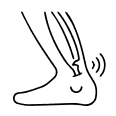
Achilles tendon

Tibialis posterior

Patellar tendons
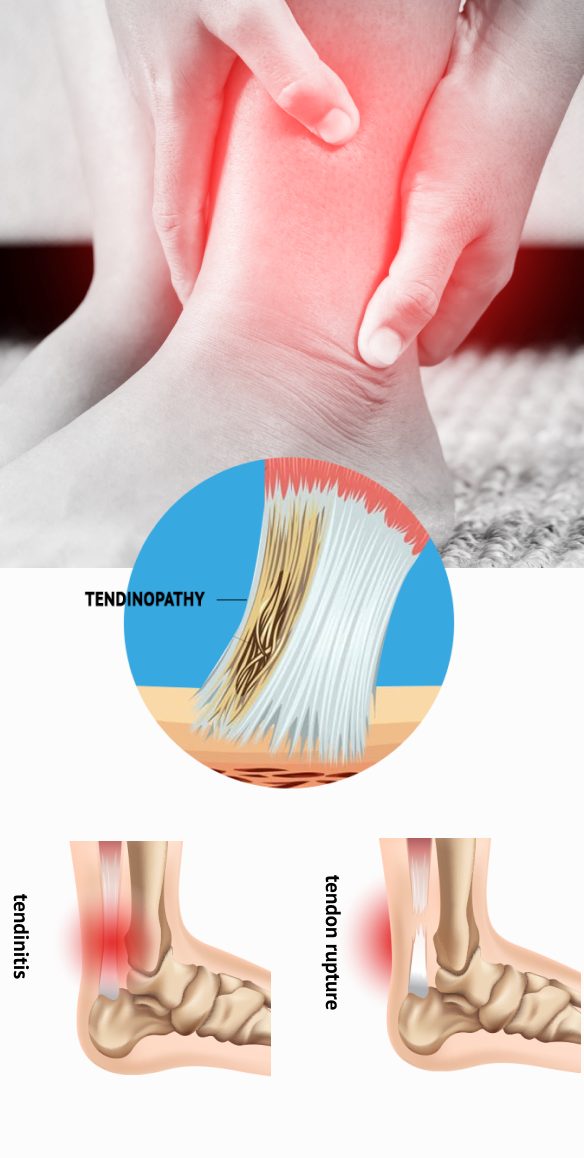
Until recently, tendon pathologies were frequently diagnosed as tendinitis, a condition marked by microtears in tendon fibers coupled with an inflammatory response. But true tendinitis is rare. Tendinosis more accurately describes repetitive overuse injury to tendons, since their low vascularity makes them devoid of inflammatory cells. Tendon overuse injuries most often involve a breakdown of the tendon’s collage matrix, a condition described as tendinosis.
Ruptures are tears in the tendon itself, brought on by high-intensity overload. Rupture of the Achilles tendon is the most common type of running injury, often misdiagnosed as Achilles tendonitis. Ruptures can range from mild to severe. Runners and athletes often ignore a mild rupture and continue to overload the affected tendon, causing further damage that degenerates over time.
An avulsion is a partial or complete tearing away of the tendon from its associated bone. It occurs when the tendon is stretched beyond its tensile capacity, often under large force loads. An avulsion fracture occurs when a fragment of bone is torn away along with the tendon.
Tendiopathy is a pathological deterioration of tendon collagen, where tendon architecture becomes disoriented, and tendon fibers begin to thin out. Tendon degeneration is sometimes marked by calcification of the tendon, lipid accumulation and fibrin deposits. Ultrasound imaging is considered a highly sensitive tool that is both valid and reliable for detecting architectural changes to tendon fibers.
Tendon conditions are often misdiagnosed, leading to inferior treatment approaches that waste time and cost money, while the tendon continues to deteriorate. At NYDNRehab, we know that tendon rehabilitation takes time, and we believe that time should not be wasted.
We use the highest resolution diagnostic ultrasonography to visualize your injured tendon in real time, with the patient in motion. Ultrasound lets us zero in on the injured tissues to identify their nature, severity, and scope. It also equips us with sonoelastography and superior microvascular imaging capabilities, to distinguish tendonitis from tendinopathy, rupture or avulsion.
Dr. Kalika’s expertise as a doctor for tendonitis/tendinosis/tendinopathy has helped dozens of runners and athletes to quickly recover from tendon injuries and return to play.
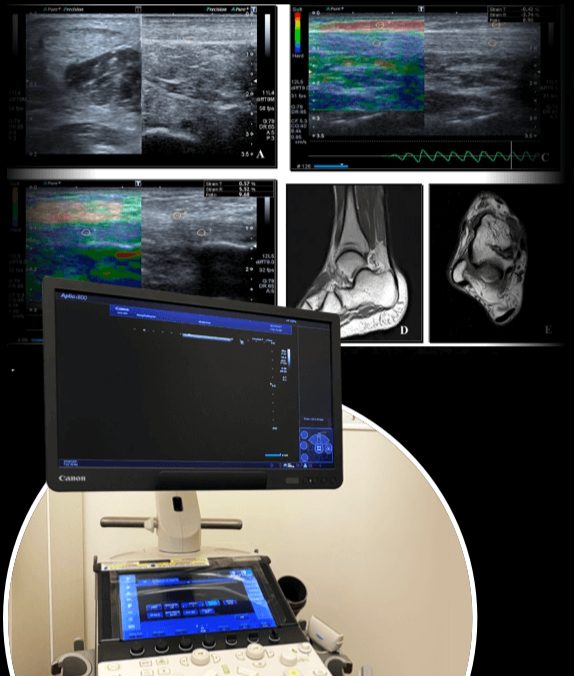
Low vascularity in tendons means limited access to nutrients necessary for tissue repair. Regenerative therapies leverage innovative new technologies that jump-start the healing process in damaged tendon cells. Your treatment protocol may include a combination of physical therapy and regenerative therapy to restore tendon strength, density and elasticity.
Focused ESWT is used as a regenerative treatment for damaged tendon, muscle and bone tissue. This technology produces high frequency sound waves to stimulate the body’s own reparative mechanisms. It is especially effective for chronic degenerative tendon disorders.
EMTT is a fairly new technology that transmits high energy magnetic pulses to targeted tissues. The magnetic waves synchronize with the body’s own magnetic fields, causing a disturbance that triggers a regenerative response. EMTT waves can penetrate deep tissues up to 18 cm beneath the skin’s surface, to target difficult-to-reach tendons.
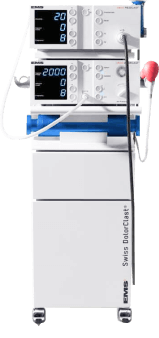
Extracorporeal Pulse Activation Technology (EPAT)
EPAT, also known as defocused shock wave therapy, uses acoustic pressure waves to enhance blood circulation to targeted tissues. This speeds up the delivery of oxygen and nutrients to damaged tissues and stimulates cellular metabolism, to accelerate the healing process.
HEIT uses electromagnetic fields to penetrate cells, tissues, organs and bones, to reactivate the electrochemical function of cells and cell membranes. HEIT generates a magnetic field 600 times stronger than the field of a normal magnet, to stimulate tendon healing.
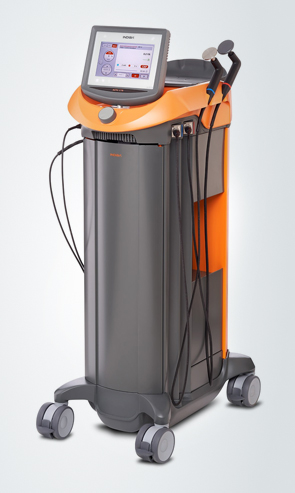
Our INDIBA Tecar therapy machine converts electrical current into a stable radio frequency current of 448 kHz, designed to increase and stabilize the exchange of ions in damaged cells, evoking a regenerative response that accelerates healing. INDIBA can be used to successfully treat joint and muscle disorders, low-back pain, sports injuries, surgical incisions and various pain syndromes. Another therapeutic effect of INDIBA is extreme and prolonged cellular hyperthermia. Due to this effect, INDIBA therapy combined with manual therapy and soft tissue tissue manipulation enables instantaneous release to occur, significantly shortening the number and duration of physical therapy sessions. What is normally accomplished in two months of physical therapy can be accomplished in 3-4 sessions with INDIBA.
Myofascial trigger points near the muscle-tendon junction often contribute to tendon pain and dysfunction. Dry needling is an outpatient procedure that inserts non-medicated needles into the trigger point to evoke a twitch response, releasing the trigger point and immediately relieving pain. Ultrasound guidance eliminates the need for multiple insertions, reducing pain and discomfort for the patient.
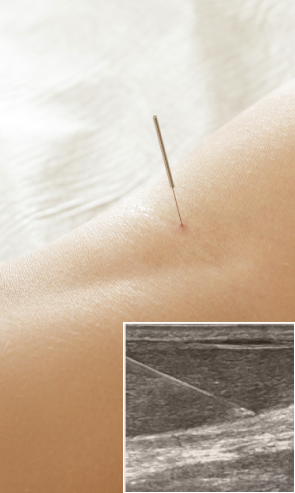
Injection therapies use natural/neutral solutions that stimulate repair of tendon fibers by either nourishing or irritating the targeted cells. Guidance by ultrasound ensures that the injected substances hit their mark, for maximum effectiveness.
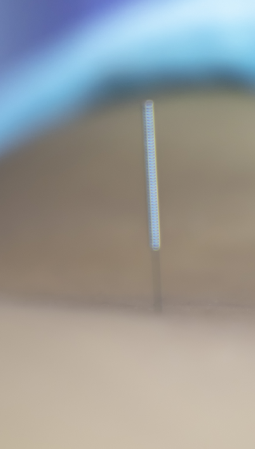
PRP therapy uses a sample of the patient’s own whole blood, which is spun in a centrifuge to extract a high concentration of platelets. When injected into damaged tissues, PRP initiates tissue repair by releasing biologically active factors such as growth factors, cytokines, lysosomes and adhesion proteins. The injected solution stimulates the synthesis of new connective tissues and blood vessels. PRP can help to jump-start healing in chronic injuries and accelerate repair in acute injuries.
Prolotherapy uses a biologically neutral solution, often containing dextrose, saline or lidocaine. The solution irritates the affected connective tissue, stimulating the body’s own natural healing mechanisms to encourage growth of new normal tendon fibers.
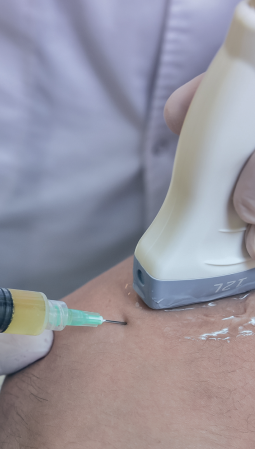
In addition to regenerative therapies, we use the latest evidence-based approaches for restoring your tendon’s tensile strength and elasticity. Our cutting-edge technologies incorporate artificial intelligence, virtual reality feedback and quantitative data analysis to retrain your motor responses and accurately measure your progress.
Your physical therapy protocol may include some or all of the following:
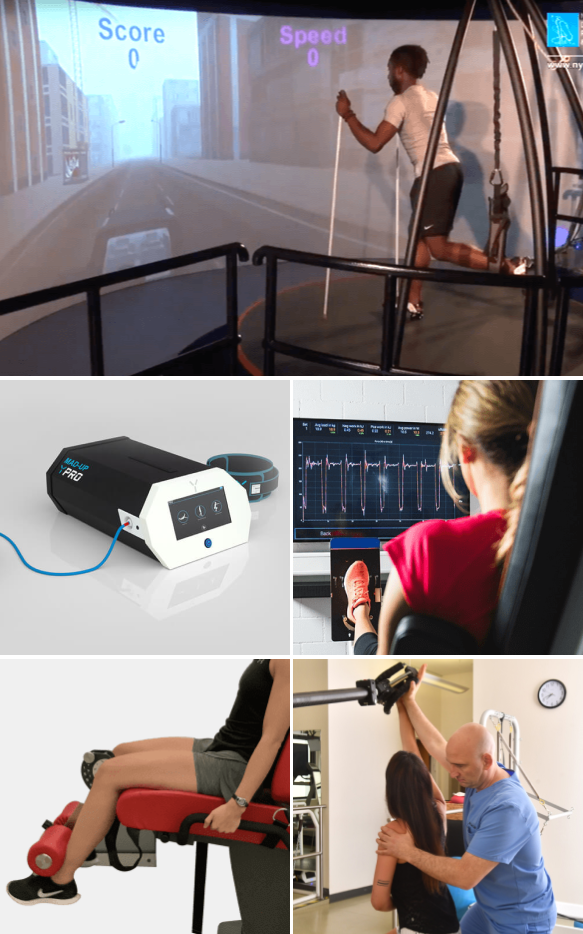
Dr. Kalika is currently a certified member of:
American Institute of Ultrasound Medicine

Active member of ISMST
International Society of Extra Corporeal Shockwave Therapy
Active member of GCMAS
Gait and Clinical Movement Analysis Society
Active member of NASS
North American Spine Society
Active member of IADMS
International Association of Dance Medicine and Science
Active member of Virtual Rehabilitation Society
Active member of ASRA
American Society of Regional Anesthesia and Pain Medicine
American Academy
Association of Orthopedic Medicine
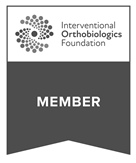
Active member of Interventional Orthobiologics Foundation
Tendon injuries are common, yet they are often misdiagnosed and therefore mistreated. At NYDNRehab, our state-of-the-art diagnostic ultrasound equipment ensures accurate diagnosis, to help us design a personalized treatment plan. Microvascular imaging and sonoelastography give us innovative diagnostic tools for measuring your progress, to ensure your treatment is working.
Once we understand the nature of your tendon injury, we use regenerative technologies that are rarely found in run-of-the-mill physical therapy clinics. Our advanced approaches dramatically reduce your chance of needing surgery, while accelerating the healing process.
If you are looking for a muscle and tendon doctor in NYC, contact NYDNRehab today. Our tendon specialists will jump-start your tendon healing so you can get back in the game in the shortest time possible.
 Dr. Yuri Brosgol
MD
Dr. Yuri Brosgol
MD
 Dr. Michael Goynatsky
DPT
Dr. Michael Goynatsky
DPT
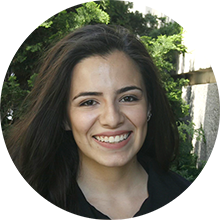 Dr. Daniela Escudero
DPT
Dr. Daniela Escudero
DPT
 Dr. Michelle Agyakwah
DC
Dr. Michelle Agyakwah
DC
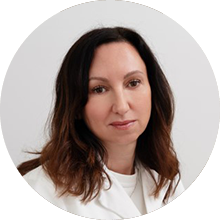 Dr. Tatyana Kapustina
L. Ac.
Dr. Tatyana Kapustina
L. Ac.
Dr. Lev Kalika is a world-recognized expert in musculoskeletal medicine. with 20+ years of clinical experience in diagnostic musculoskeletal ultrasonography, rehabilitative sports medicine and conservative orthopedics. In addition to operating his clinical practice in Manhattan, he regularly publishes peer-reviewed research on ultrasound-guided therapies and procedures. He serves as a peer reviewer for Springer Nature.
Dr. Kalika is an esteemed member of multiple professional organizations, including: